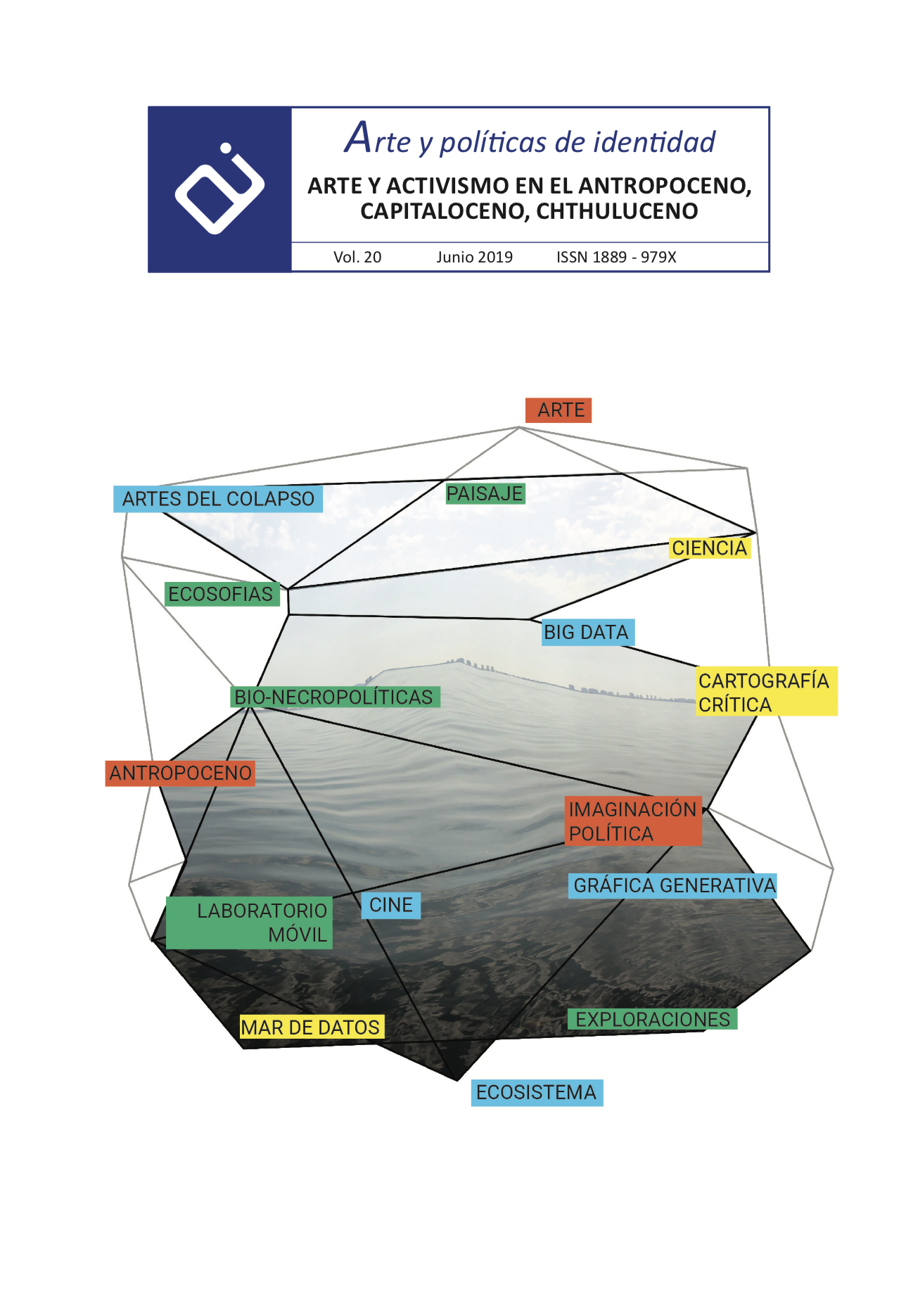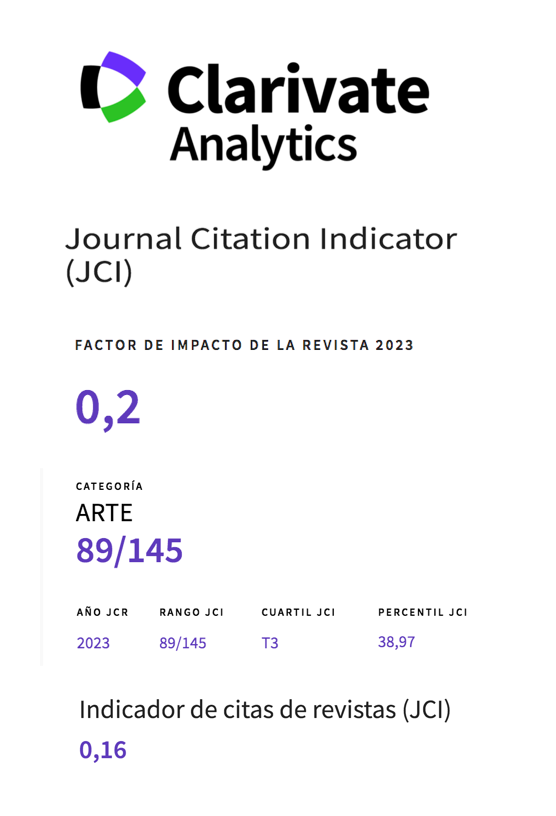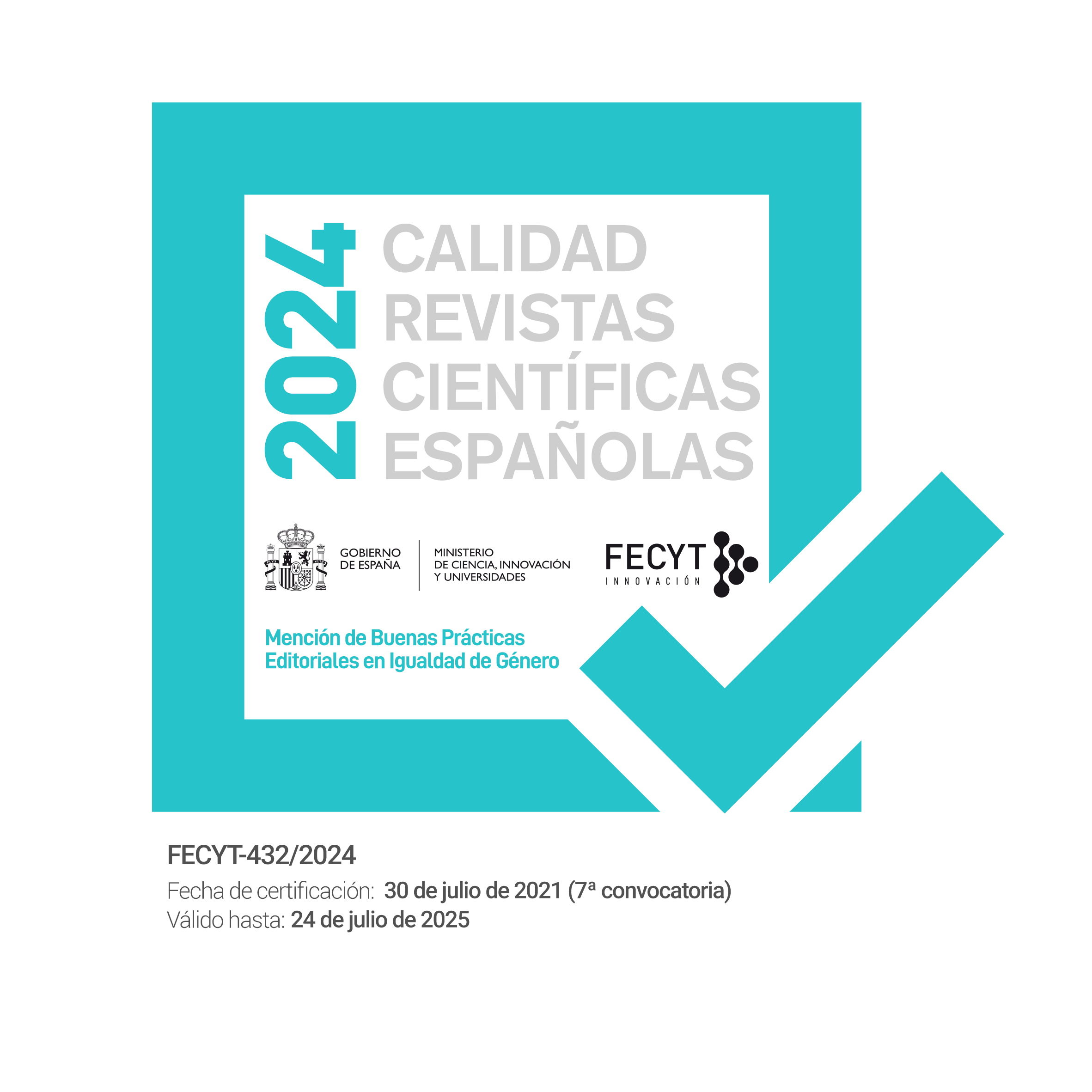La Realidad Virtual en la Creación Artística
Conceptos, Tecnologías, Trayectoria y Actualidad
Resumen
La aplicación de la Realidad Virtual (RV) en la creación artística se remonta a la década de 1990, cuando se comercializan losprimeros sistemas de RV. Sin embargo, los altos costos y lasdificultades técnicas para realizar y exhibir este tipo de obras limitaron la exploración artística de esta tecnología. En la segundadécada del s. XXI, la RV ha experimentado un renacimiento debido,en parte, a los avances tecnológicos en la computación gráfica y las interfaces físicas, bien como a su abaratamiento. Todos estos factores, están reimpulsado la utilización de la RV en las artes al facilitar la creación y exhibición de las obras.
Descargas
-
Resumen2016
-
PDF1495
Citas
Acute Art (s/f). Recuperado de https://acuteart.com/artist/marina-abramovic.
Acute Art (s/f). Recuperado de https://acuteart.com/artist/anish-kapoor/
Addison, R. (1995). Detour: brain deconstruction ahead. IEEE computer graphics and applications, 15(2), 14-17.
Anstey, J., Pape, D. y Sandin, D. (2000). The Thing Growing: Autonomous characters in virtual reality interactive fiction. Proceedings IEEE Virtual Reality 2000, 71-78.
Benayoun, M. (1998). World skin. ACM SIGGRAPH 98 Electronic art and animation catalog, 9.
Bowman, D.A. y McMahan, R.P. (2007). Virtual reality: how much immersion is enough? Computer, 40(7), 36-43.
Cruz-Neira, C., Sandin, D.J., DeFanti, T.A., Kenyon, R.V. y Hart, J.C. (1992). The CAVE: audio visual experience automatic virtual environment. Communications of the ACM, 35(6), 64-73.
Czernuszenko, M., Pape, D., Sandin, D., DeFanti, T., Dawe, G.L. y Brown, M.D. (1997). The ImmersaDesk and Infinity Wall projection-based virtual reality displays. ACM SIGGRAPH Computer Graphics, 31(2), 46-49.
Davies, C. (1998). OSMOSE: Notes on being in Immersive virtual space. Digital Creativity, 9(2), 65-74.
Defrost (s/f). Recuperado de https://www.defrostvr.com.
Dolinsky, M. y Sehmisch, G. (1997). Dream Grrrls: Metaphors. Visual Proceedings: The Art and Interdisciplinary Programs of SIGGRAPH 97, 129.
Electronic Visualization Laboratory (s/f) Recuperado de https://www.evl.uic.edu/list.php?id=1&page=8.
Fleischmann, M. y Strauss, W. (2008). Staging of the thinking space. From immersion to performative presence. En U. Seifert, J.H. Kim and A. Moore (Eds.) Paradoxes of Interactivity. Perspectives for Media Theory, Human-Computer Interaction, and Artistic Investigations (pp. 266-281). Bielefeld: Transcript.
Gigante, M.A. (1993). Virtual reality: definitions, history and applications. En R.A. Earnshaw, M.A. Gigante y H. Jones, H. (Eds.) Virtual reality systems (pp. 3-14). London: Academic press.
Grau, O. (2003). Virtual Art: from illusion to immersion. Cambridge, Massachusetts: MIT press.
Gochfeld, D., Brenner, C., Layng, K., Herscher, S., DeFanti, C., Olko, M. y Perlin, K. (2018). Holojam in wonderland: immersive mixed reality theater. Leonardo, 51(4), 362-367.Heiling, M. (s/f). Recuperado de
Hendrix, C. y Barfield, W. (1996). Presence within virtual environments as a function of visual display parameters. Presence: Teleoperators & Virtual Environments, 5(3), 274-289.
Krueger, M. (1991). Artificial Reality II. Massachusetts Addison-Wesley Professional.
Krueger, W. y Froehlich, B. (1994). Responsive Workbench. En Virtual Reality’94(pp. 73-80). Berlin, Heidelberg: Springer.
Laurel, B., Strickland, R. y Tow, R. (1994). Placeholder: landscape and narrative in virtual environments. ACM SIGGRAPH Computer Graphics, 28(2), 118-126.
Lee, K.M. (2004). Presence, explicated. Communication theory, 14(1), 27-50.
Lombard, M. y Jones, M.T. (2015). Defining presence. En M. Lombard, F. Biocca, W.A. Ijsselsteijn, J. Freeman y R. Schaevitz (Eds) Immersed in Media: Telepresence Theory, Measurement and Technology (pp. 13-34). London: Springer.
Machon, J. (2013). Immersive theatres: Intimacy and immediacy in contemporary performance. London: Macmillan International Higher Education.
Media Art Net (2004). Shaw/Hegedüs/Lintermann: conFIGURING the CAVE. Recuperado de http://www.medienkunstnetz.de/works/configuring-the-cave.
Moreau, G. (2013). Visual immersion issues in Virtual Reality: a survey. IEEE. Conference on Graphics, Patterns and Images Tutorials, 6-14.
Moser, M.A. y MacLeod, D. (1996). Immersed in Technology: Art and Virtual Environments. Cambridge, Massachusetts: MIT Press.
NASA (s/f). Virtual Reality: Definition and Requirements. Recuperado de https://www.nas.nasa.gov/Software/VWT/vr.html.
Pimentel, K. y Teixeira, K. (1994). Virtual reality through the new looking glass. New York: McGraw-Hill.
Popat, S. (2016). Missing in action: embodied experience and virtual reality. Theatre Journal, 68(3), 357-378.
Rheingold, H. (1991). Virtual reality: exploring the brave new technologies. New York: Simon & Schuster.
Scroggins, M. y Dickson, S. (1996). Topological slide. En M.A. Moser y D. MacLeod (Eds.) Immersed in Technology: Art and Virtual Environments (pp. 309-313). Cambridge, Massachusetts: MIT Press.
Simó, Á. (s/f). Recuperado de http://www.aguedasimo.net/sier.htm.Simó, Á. (2018a). Combining Stereoscopic Live Action Video with Holobench-type Displays: An Artistic Exploration of Space Dimensions. ACM Proceedings of the Virtual Reality International Conference-Laval Virtual, 2-3.
Simó, Á. (2018b). The Virtual Reality Art Installation Endocytosis: Evolving from a Flat Land into a Three-dimensional World. Leonardo, 51(2), 124-127.
Slater, M. y Wilbur, S. (1997). A framework for immersive virtual environments (FIVE): Speculations on the role of presence in virtual environments. Presence: Teleoperators & Virtual Environments, 6(6), 603-616.
Slater, M. (2007). The concept of presence and its measurement. PEACH Summer School, Santorini, Greece.
Stenger, N. (s/f). Recuperado dehttp://www.nicolestenger.com
Steuer, J. (1992). Defining virtual reality: Dimensions determining telepresence. Journal of communication, 42
(4), 73-93.
Sutherland, I. (1965). The Ultimate Display. Proceedings of the IFIP Congress, 506-508.
Watson, M. (1999). Liquid meditation. SIGGRAPH Electronic Art and Animation Catalog(p. 13).
Wilson, S. (2002). Information arts: intersections of art, science, and technology. Cambridge, Massachusetts: MIT Press.
Willis, H. (2016). Fast Forward: The Future (s) of the Cinematic Arts. New York: Columbia University Press.
Zhou, N. N. y Deng, Y. L. (2009). Virtual reality: A state-of-the-art survey. International Journal of Automation and Computing, 6(4), 319-325.
Works published in this journal are subject to the following terms:
- The Service of Publications from the University of Murcia (publishing house) keeps the published works’ copyrights, and favors and allows the reuse of these works under the license indicated in point 2.
- Works are published in the journal’s online edition under the license Creative Commons Reconocimiento-NoComercial-SinObraDerivada 3.0 España(texto legal). They can be copied, used, disseminated, transmitted and publicly exhibited, as long as: i) the author and original source of publication are cited (journal, publishing house and work’s URL); ii) they are not used for commercial purposes; iii) the existence and specifications of this license are mentioned.
3. Conditions for auto-file. It is allowed and encouraged that authors share electronically their pre-print version (the pre-reviewed version) and /or post-print version (the reviewed and accepted version) of their Works before the publication, since it promotes its circulation and dissemination. RoMEO color: green.










